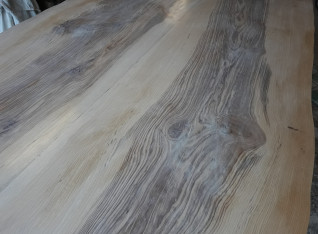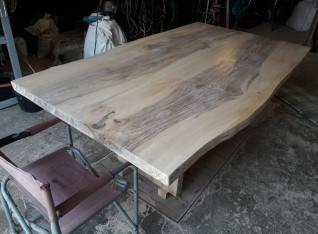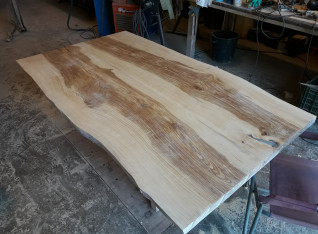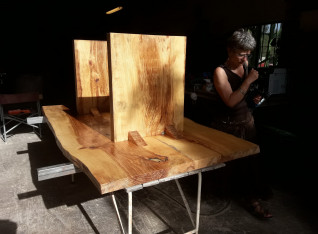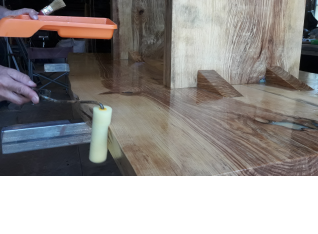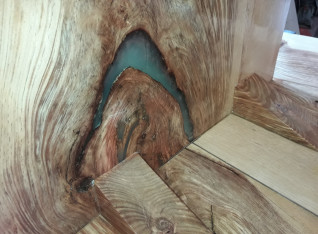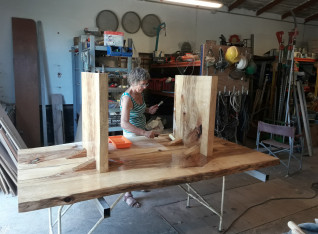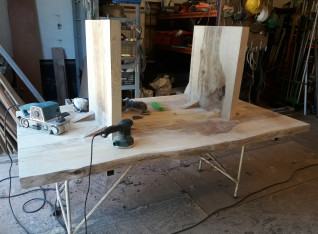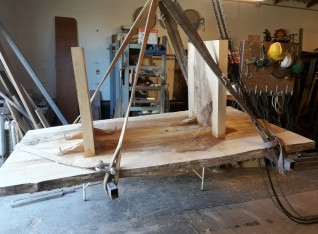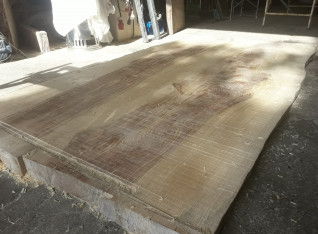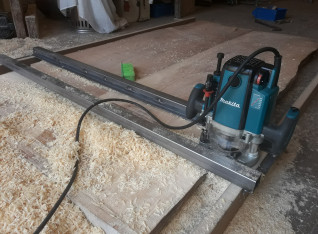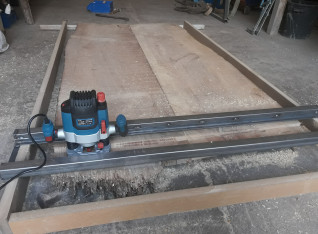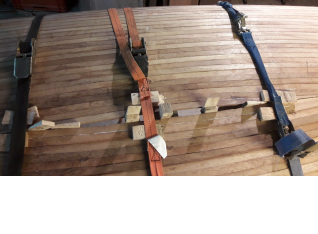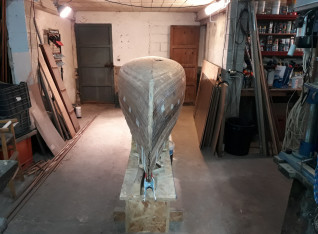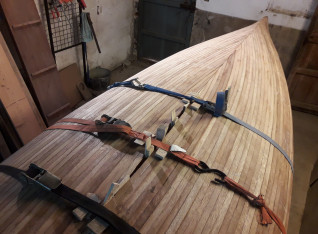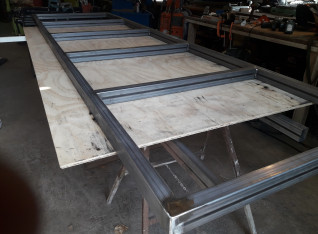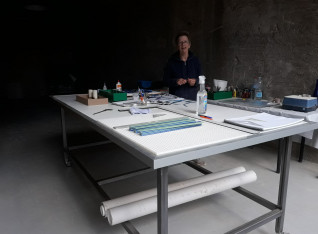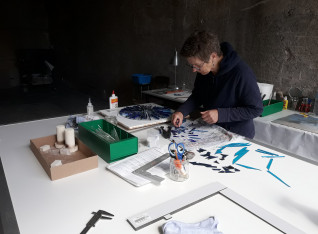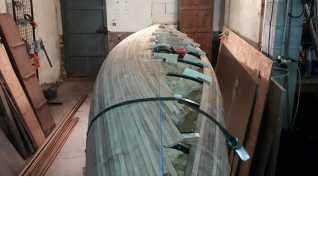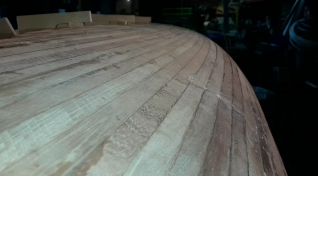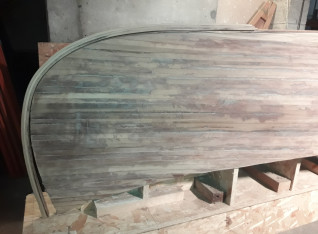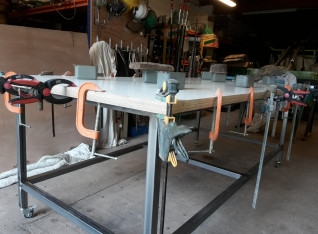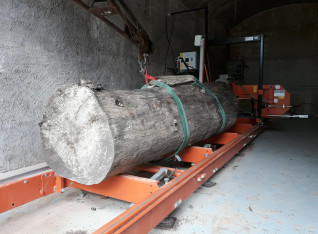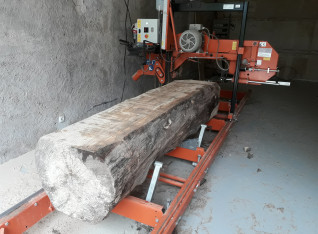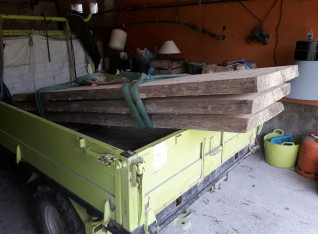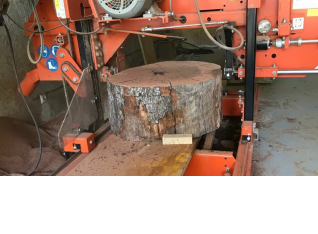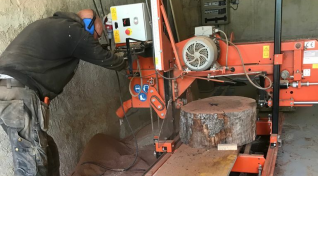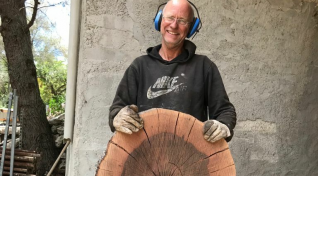Don't worry, we are just very busy...
May 21, 2021We have received a few messages from followers who wondered why there was no more feed of blog posts since February 5 this year. Nothing is wrong, no Corona or anything, we have just been very busy. A second reason is perhaps that not all our activity is really interesting. Let me update you on what has been going on here since over 3 months ago.
Vineyard
Last year we decided to stop trying to make good and healthy grapes after 5 years of mildew; last year 100% of all vines were infected. We were both very determined not to continue, clear the whole vineyard and we were evaluating other options, plants, trees to grow there. But gradually we changed our thoughts and when I suggested to buy a mini tractor which could plow the weeds under between the rows, we were not so sure anymore. The most time consuming factor in having a vineyard is weed control. With a mini tractor we could reduce the labor by at least 50% was our estimate. So I bought a mini tractor through an auction in Germany, including a plow. This proved indeed to be a lot quicker than weeding by hand.
Apart from this we needed to follow a strict schedule of spraying - ecologically - against mildew. The mildew spores must be still on the vines and in order to fight it we spray the whole vineyard every 10 days with sulfur. One time from above and one time from below. More spray sessions should be considered after heavy rain. But this has not happened yet. In order to be more effectively spraying we pruned the runners, branches which do not wear any grapes, but only grow. Less sulfur is needed and less leaves and branches means less chance to get an outbreak of mildew is our theory. The last time I sprayed was May 16, so in 5 days time I have to spray again. Maybe one or two days before as heavy rainfall is expected on Sunday.
Sofar the vines are looking super healthy and when you come near the vineyard or walk between the rows you can smell the sulfur clearly. If everything stays this way we will have a yield of at least 500 kg, enough to fill up one stainless steel container of 500 liter. The previous years we had just over 100 liter of wine and even though you keep the lit sealed right on top of the wine, the chance of oxidation of the wine proves to be much higher.
If we will not succeed in at least making good grapes, we will throw the towel in the ring and destroy the whole vineyard. It's not our favorite hobby to accept losing, but sometimes you have to it.
Making tables
A friend brought us in contact with an English family as they had just moved in their new home in Victoria (near Alcudia, close to the sea). They needed a few basic and solid wooden tables. One for outside and one for inside, the outside table being a bit larger, but similar style tables. They wanted it custom made, but the carpenters they visited were all too busy. So this Dutch friend recommended me. She had seen the outside table I made last year and I had told her that I was looking for more 'customers' to make tables.
The English family came to La Mina and I took on the job for the tables. I bought some slabs of oak wood from my new wood-friend just outside Inca. The English family came again to see the wood, but were not sure if this would be the perfect wood for their tables. Lighter colored wood would be better. I had seen a stack of pine wood slabs at my wood-friend's place which was perhaps better suited for the tables. So I went there again and bought 3 more slabs of just over 2 meter long and 60 cm wide ! Two slabs for the tabletop and 1 slab for the two legs which should be solid pieces of wood.
I outside long ends of the table should keep the natural line of the wood. So I sawed the other side of each slab straight off and glued it together using epoxy. To increase the strength of the connection I drilled 10 holes in each side for dowels. I sandwiched both ends with straight pieces of wood to make sure the 2 slabs would remain flat and strapped the slabs together with straps and ratchets.
The next day I discovered that somehow the slabs had bent inside, even though I had sandwiched the ends with thick pieces of wood. Maybe these pieces of wood were not as straight as they seemed, but fact was that the table was not flat at all. I considered all options to correct this rookie mistake and lack of attention and decided to use a router on a self made sledge which was gliding over 4 pieces of MDF wood around the table. This last sentence is quickly written, but it proved to be many hours on concentrated work with lots of saw dust, sitting on my knees on the table in an awkward position. First I intended only to do the top side of the table, but later I agreed with myself that the bottom side should also be done, so another 4 hours of routing centimeter by centimeter off the table. I bought a new Makita router for the job, which I paid for too much compared to online offers, but I needed to complete this table as the English family was using camping furniture in their new home and I did not want them to suffer too long.
During the process of making the table I realized again that good tools are essential. My Bosch Green band saw machine for instance did not have the power and the weight to quickly sand of the saw and router bit lines. Piet had already offered me his professional Virutex machine and I accepted his offer after I had been sanding off an hour with little to zero result using my Bosch toy. With Piet's machine I sanded the whole table smooth in just a quarter of an hour.
The second table, same type of wood, same style, but for inside their home as their dining table, is meant to be completed next week. But more tables have been made the past months. For Ans her workshop I have made a huge worktable of 125x250 cm and for a colleague glass artist of Ans I have made a frame of square rectangular steel tubing, of more than 3 meter long. Tables are on the menu this year.
Canadian Canoe Project.
I am so happy that we have made a lot of progress with the canoe project. Piet did not have a lot of work a few months back and got the spirit again to continue on the canoe. He prepared enough new strips of wood to complete the hull and for a few weeks in a row I promised to myself that I would do 1 strip of wood every day. The hull is now as good as ready for being covered with fiberglass fabric glued to the hull with epoxy resin. The only thing we need to do now is attaching the outer stems on both sides and we decided to run the keel wood all along the keel line. This will be done this weekend. Next week or weekend we will apply the fiberglass fabric. The next step will be removing the actual canoe from it's mold and start working on the inside of the canoe. I still have good hopes that I will be peddling in the Bay of Alcudia in July or August.
Maybe I will be making more canoes, but not of Iroko wood, but of Paulownia wood, the super fast growing trees which also has been planted here on Mallorca on a small scale. I had a meeting last week with Miguel Galmes, an entrepreneur with multiple big businesses on Mallorca like the CIMSA wood company. He has many plantations of Paulownia trees on the island, but I get the feeling that the scale of his plantations are not large enough to be selling to wholesalers who want minimum volumes of wood in the thousands of cubic meters. Plus the wood is here on a relative small island and transport to the mainland is expensive. In Bulgaria are plantations of hundreds of hectares and the circumstances are better there as well. Still I believe there could be a market for the wood here on Mallorca, for instance for canoe or boat building. The wood is soft, but if you make the core of a boat of this wood and use fiberglass sheet on both the inside and outside you will get a strong boat. Miquel gave me a few trunks of dry Paulownia wood, which I will mill into strips for the next canoe and hopefully it's suitable.
Other news
* Ans wants to have tool to apply glass powder on he creations, but the tool you can buy is shitty - besides the fact that it's 'out of stock' everywhere. This started me thinking of an improved design. I am working on this right now. It is still in an early stage, but I see a nice potential for this. It's a niche market, the glass fusion 'industry' , but this makes it also more interesting in my opinion as the big boys will not enter it and blow you away. When it becomes a 'proven design' I will write about this more.
* Laser engraver/cutter. I bought one to cut out forms for Ans, like heart shapes. Cutting a heat resistant board is not easy with a jigsaw and laser cutting can be the solution. I have bought the machine, but it's not cutting deep enough as the focus point of the laser beam must be adapted as it cuts deeper and this is not easy.
* We have just sold our houses in Sweden. This is a relief for us as it difficult to manage the houses from Spain. Simple to fix issues become major issues. The money will be spend partly on tools for Ans her glass art studio.
* 20 Industrial lamps have been sold to Weinwert, the German wine maker on Mallorca. Owner Henri Fink has become a personal friend and he has bought a castle near Algaida where he will make wine, store wine, do wine tasting, sell wine, open a restaurant and more. The retro industrial lamps I bought in Poland last year will look just right there.
